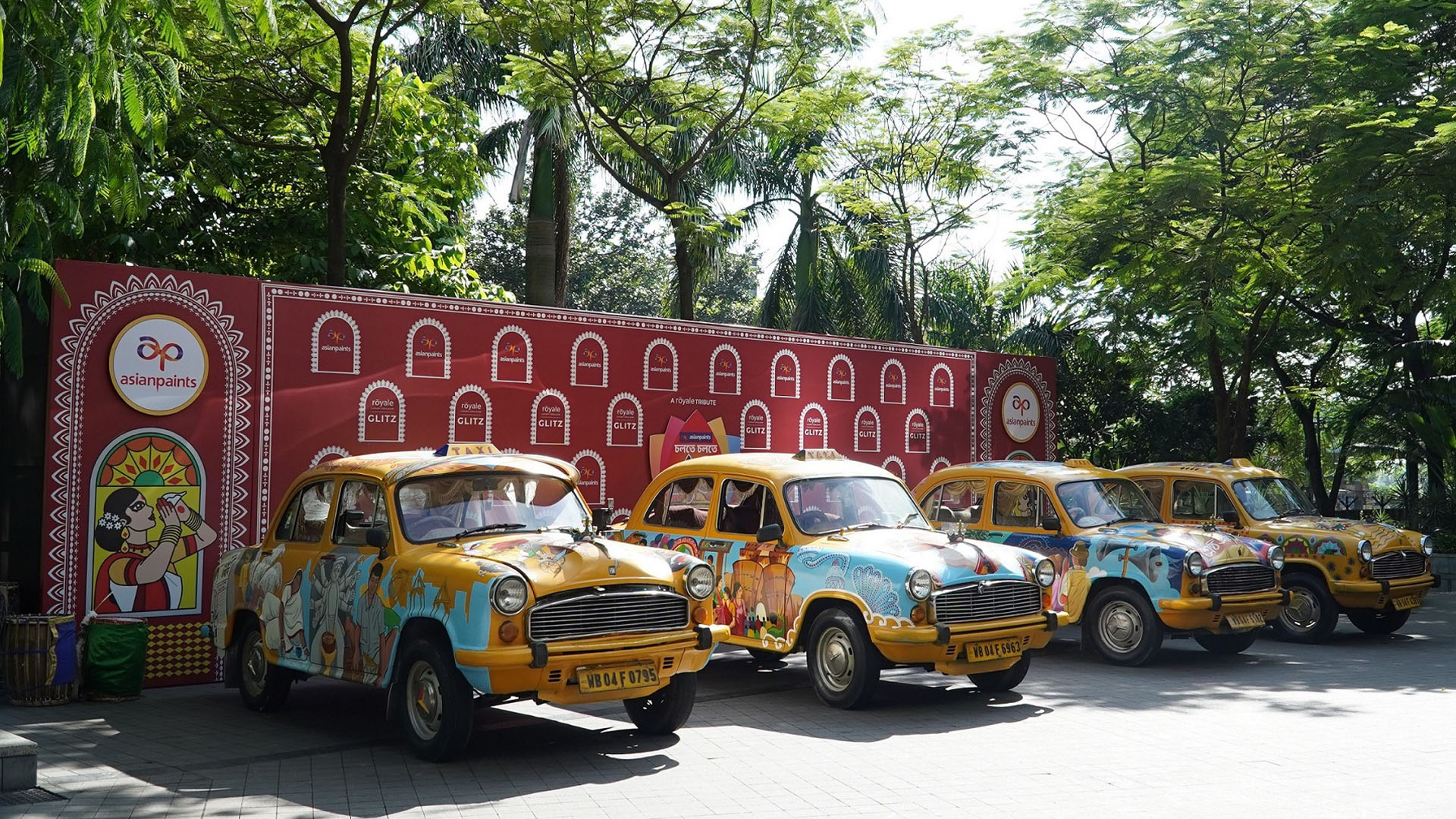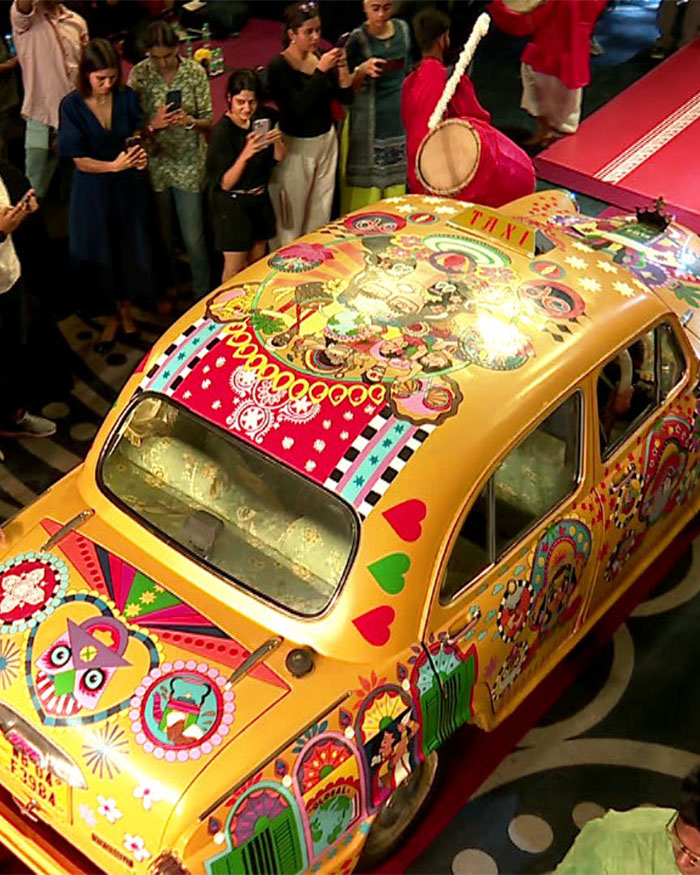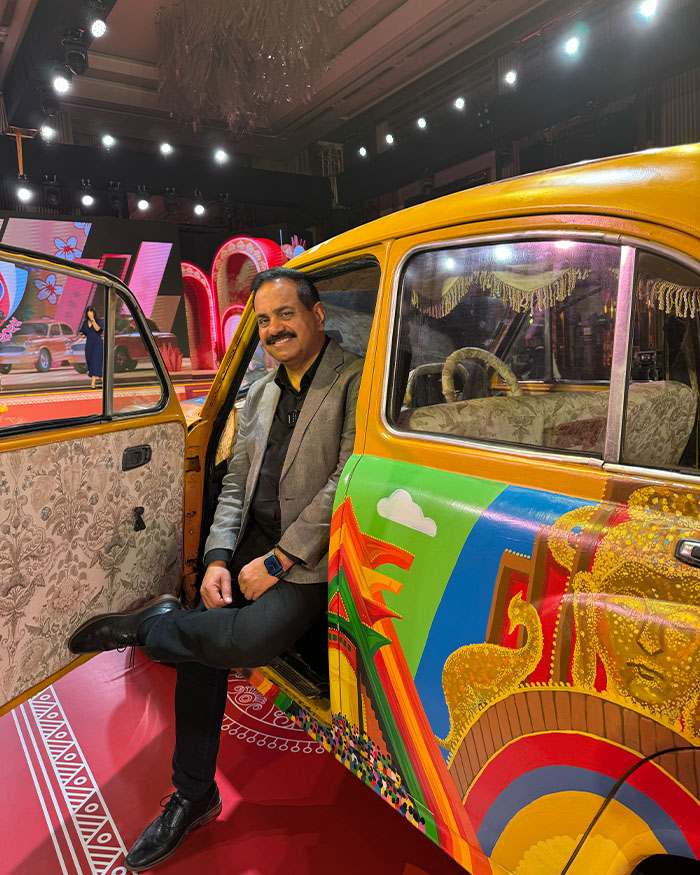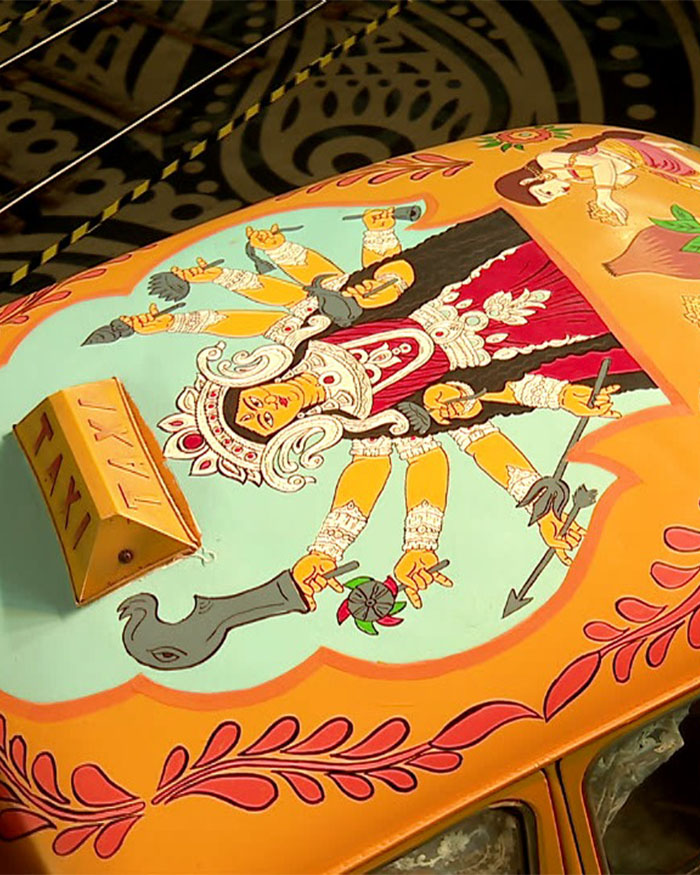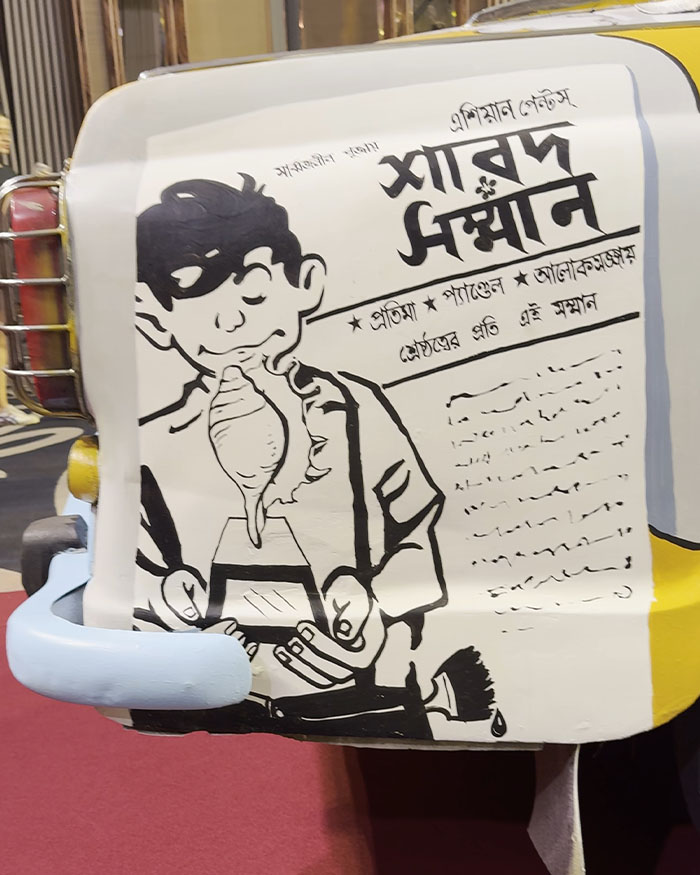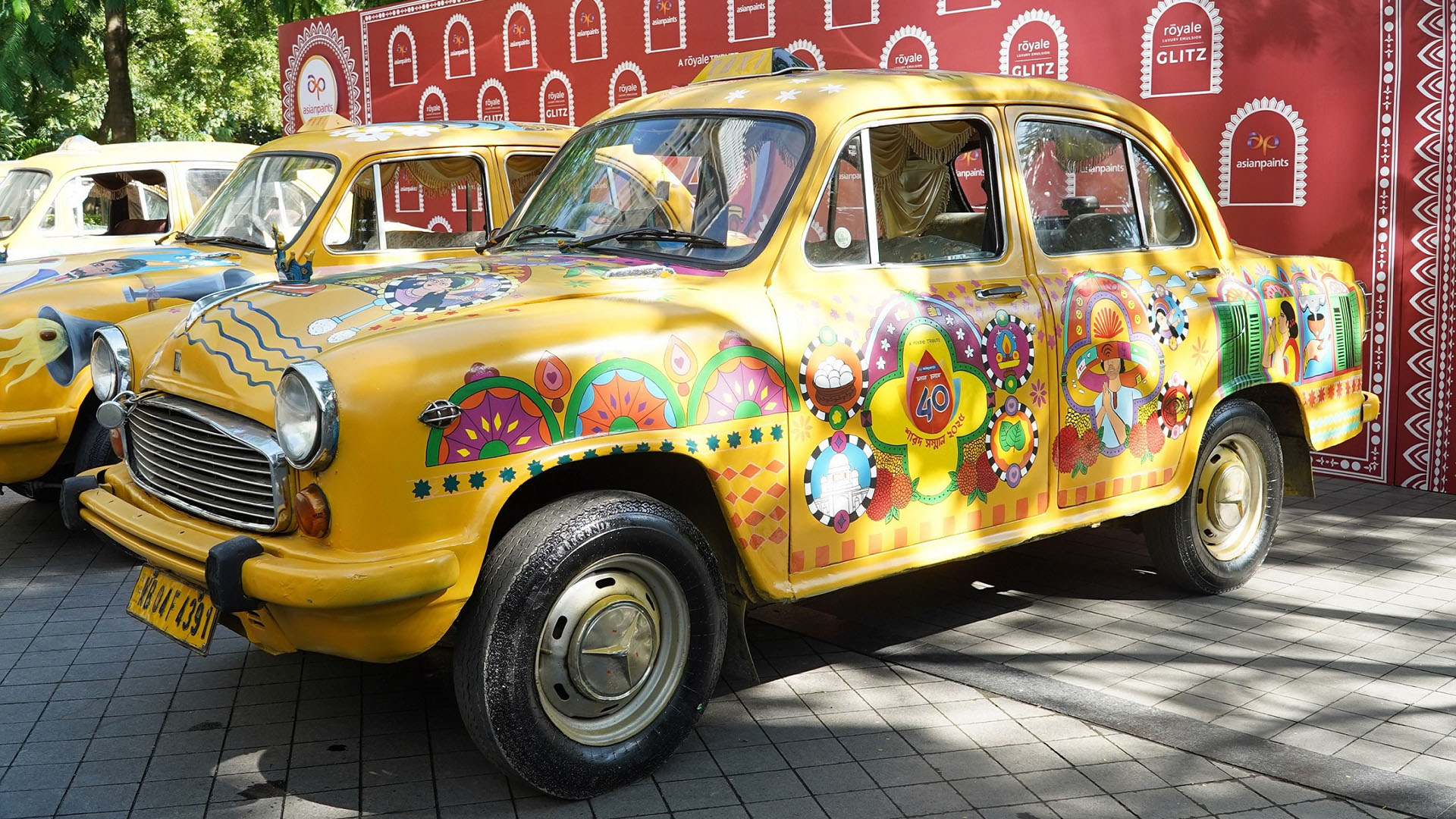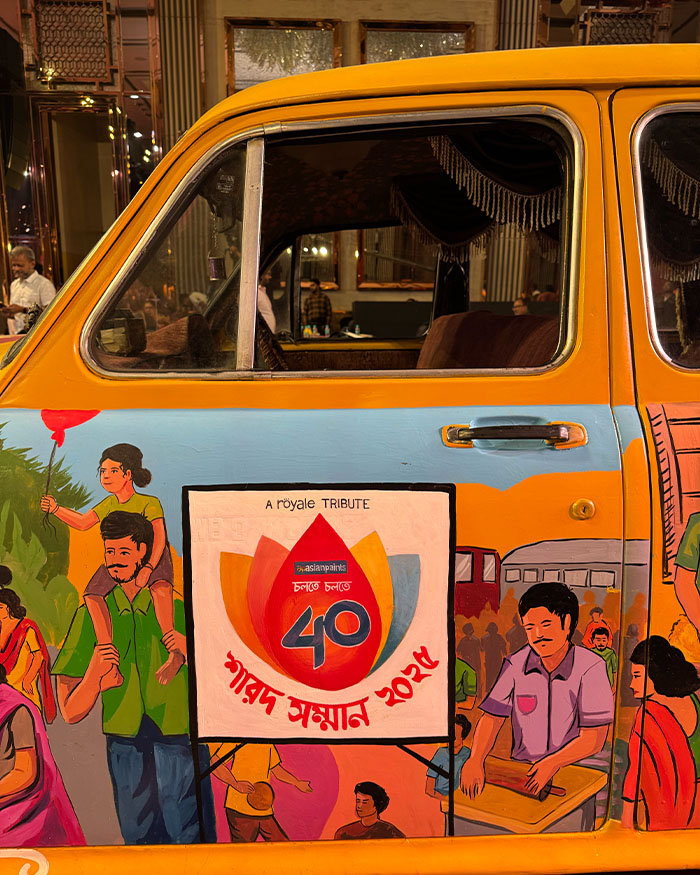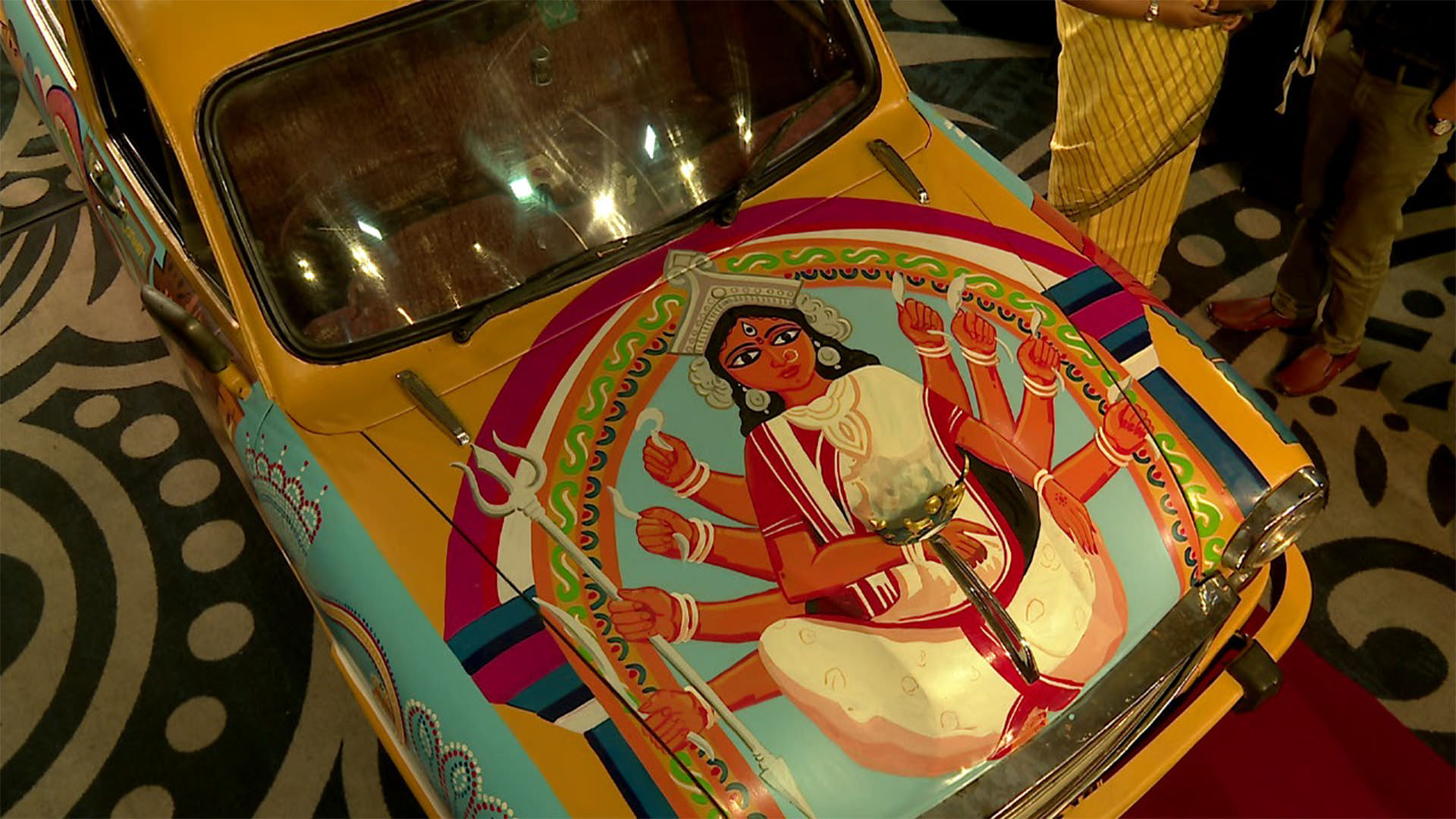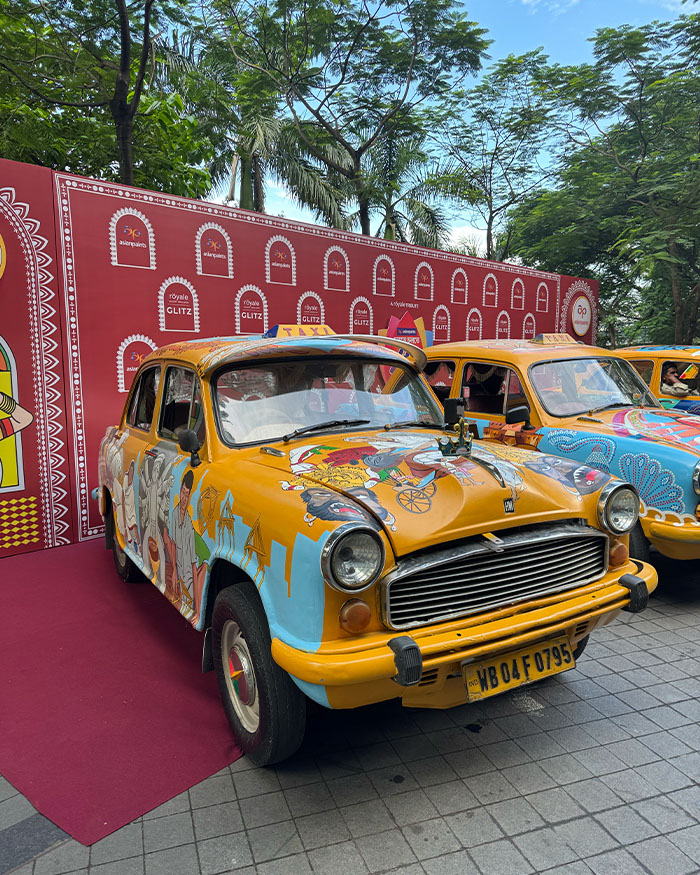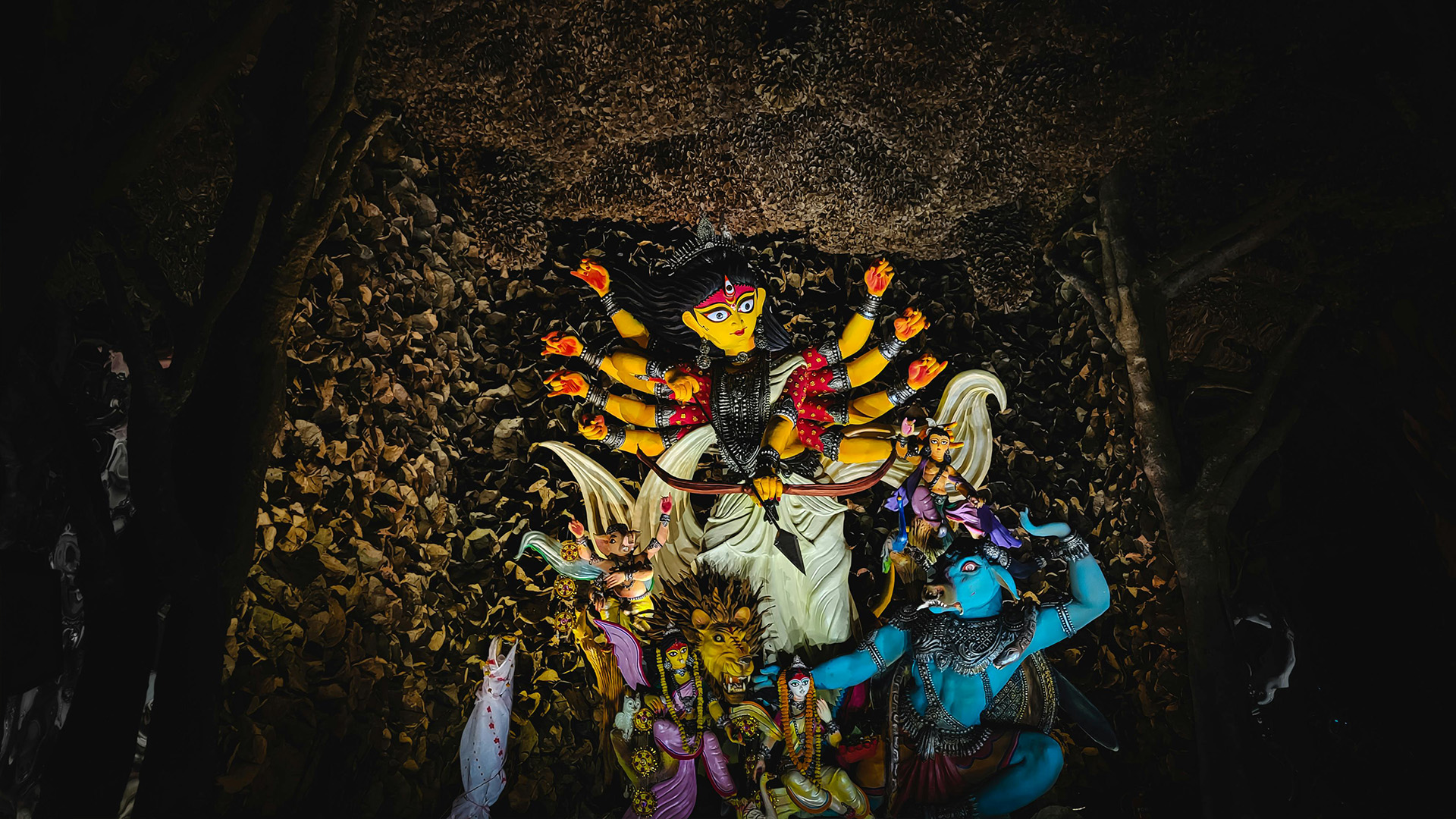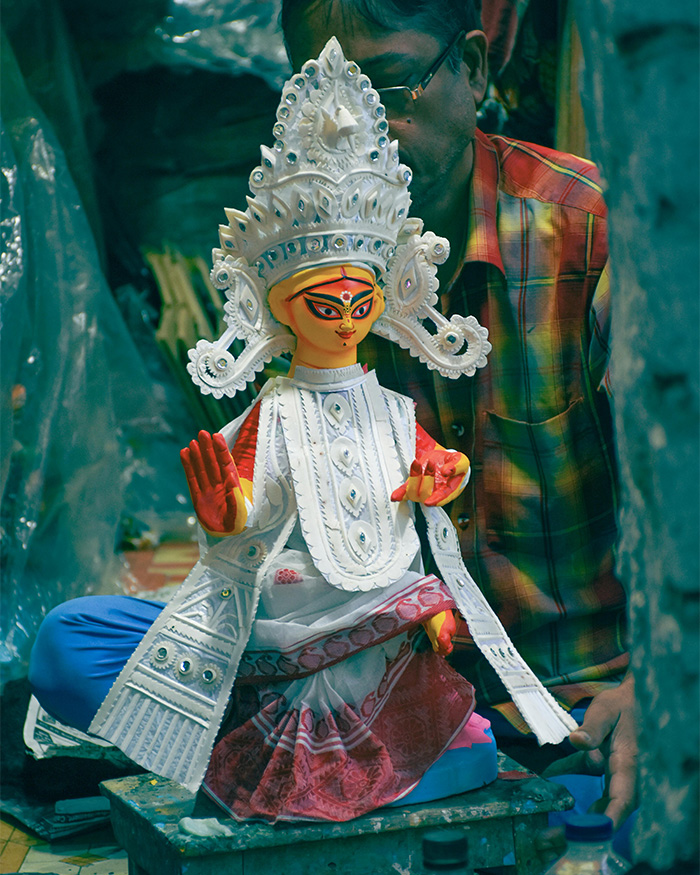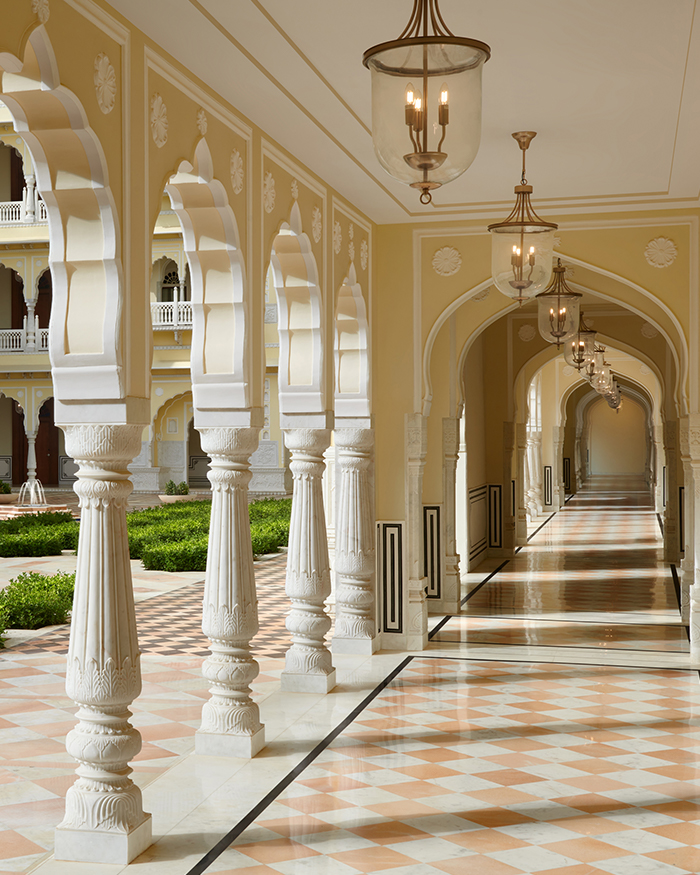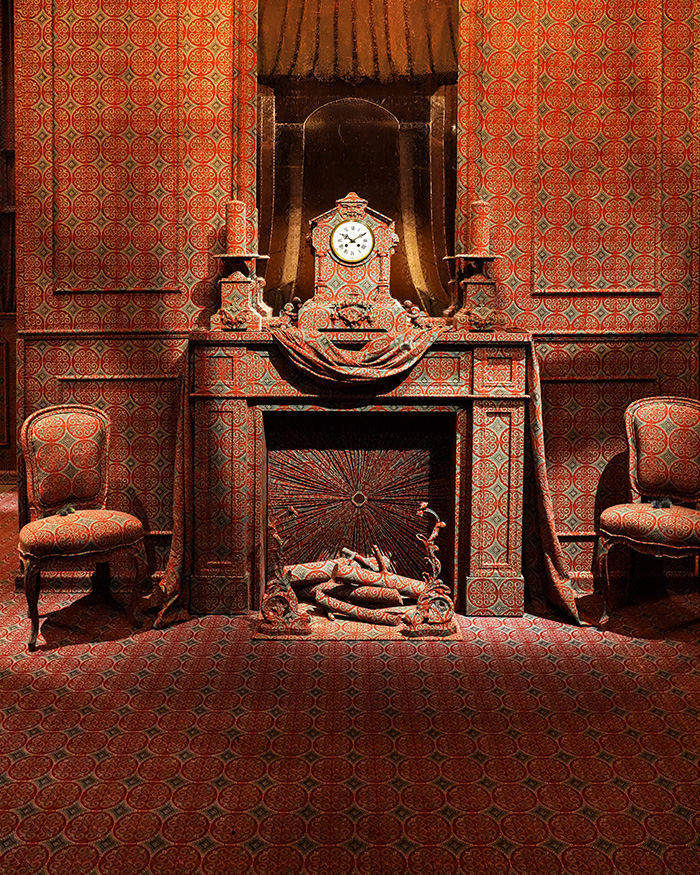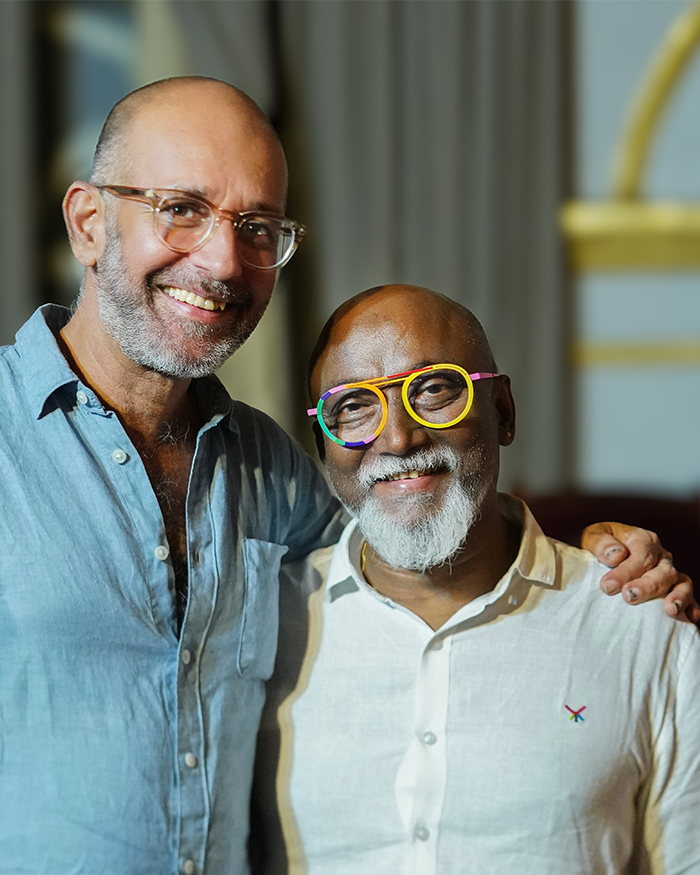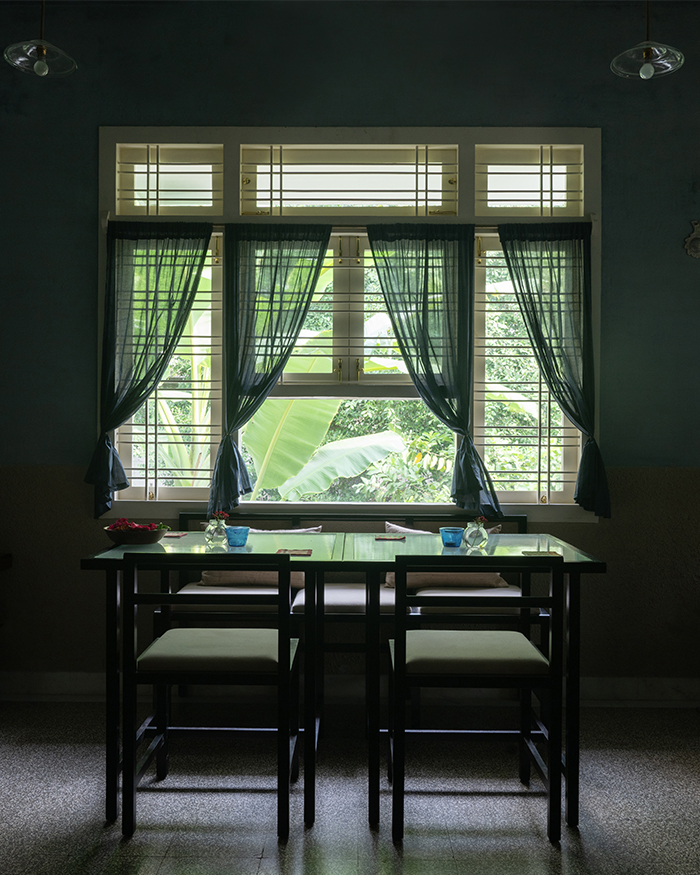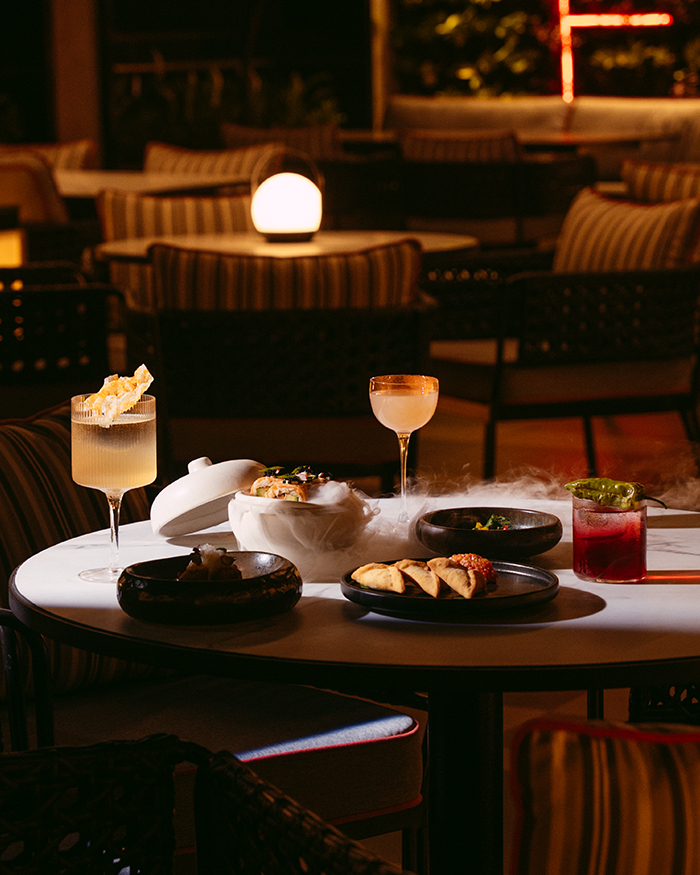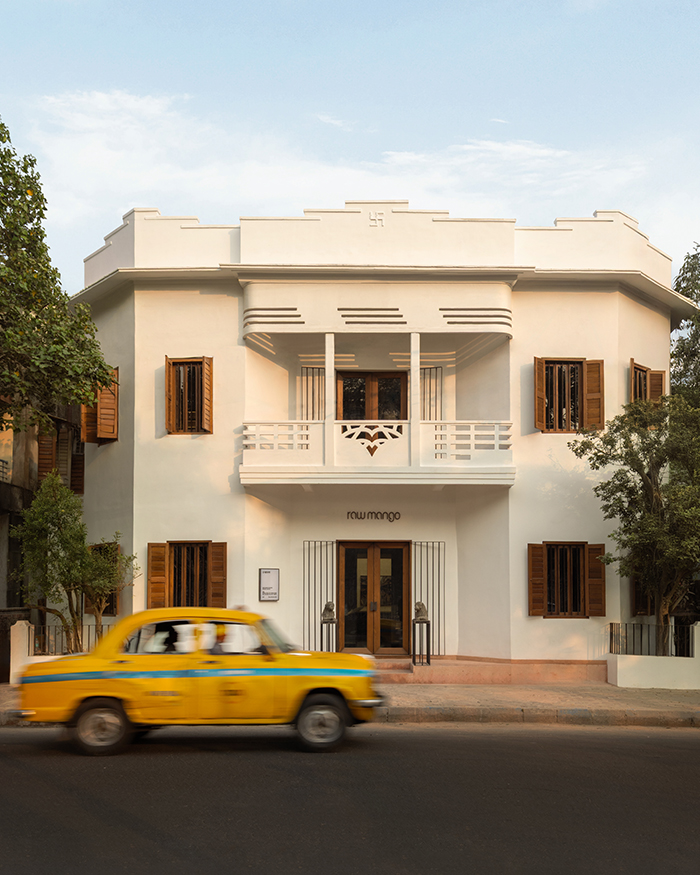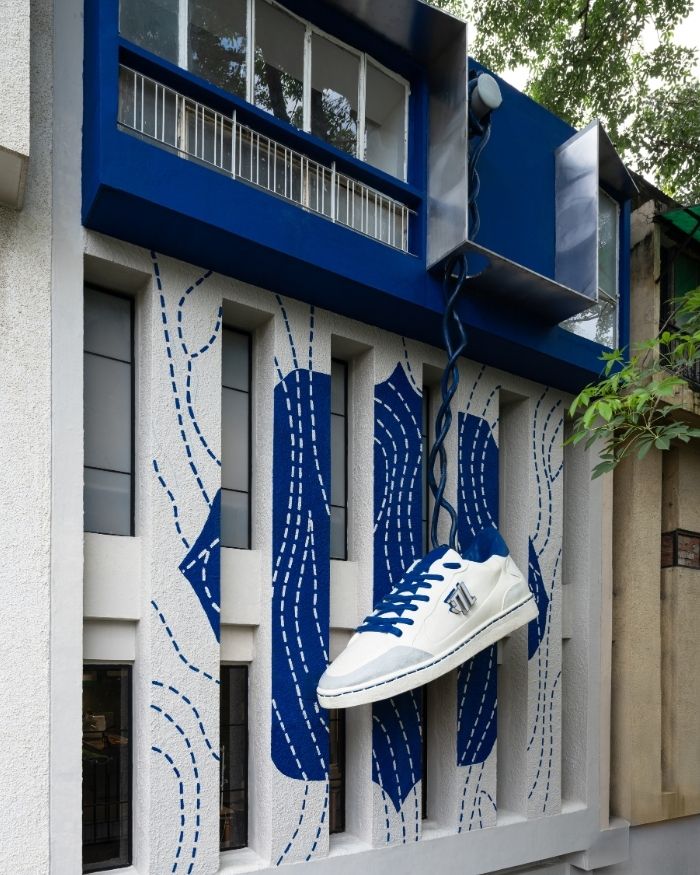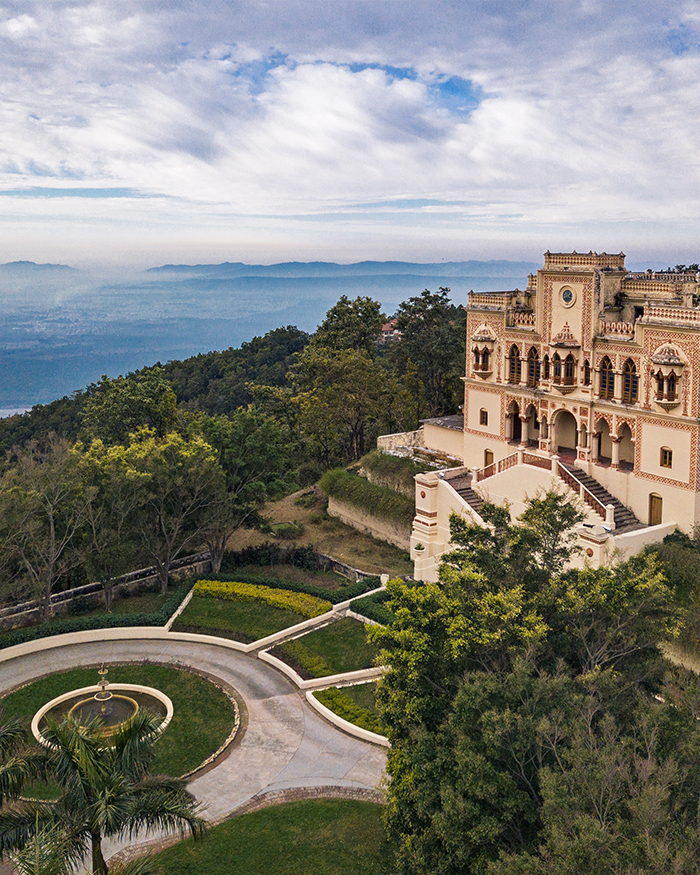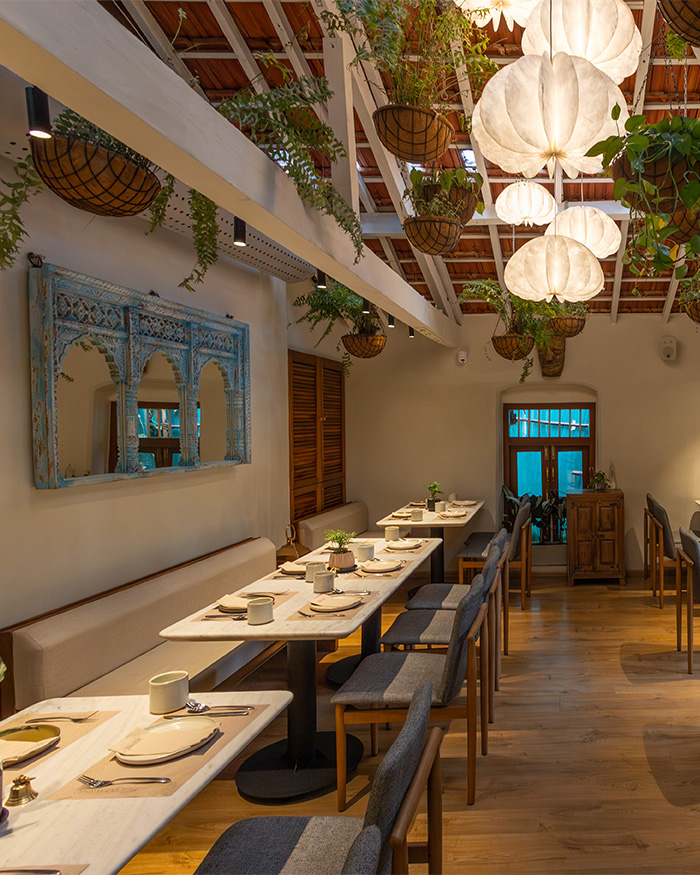As a Prabashi Bangali, the usual cliché is a longing to return to Kolkata during Durga Pujo. For me, though, this yearning never manifested too strongly. Yet every year, when the monsoon clouds recede and the skies turn a shade of unmistakably crisp blue, the air brings back memories of kaash phool and the buzz of something larger than life. Making my way back after two years, I expected a different city. Almost as if the urbanity of this colonial metropolis would warp and shift time in my absence. What I found waiting for me was a reckoning.
We were celebrating Asian Paints Sharad Shamman, Kolkata’s most prestigious award for the best Pujo pandal. The jubilant host told us how, 40 years ago, this tradition began and has since defined each generation, now exalted with art on the iconic yellow taxis. The initiative, supported by St+art India, honours narratives that might be lost to time elsewhere, but in Kolkata are unlikely ever to be forgotten. Only when he finished did I realise it was all in Bangla. It is strange, and almost amusing, how the mind slips back into patterns without our noticing. People often criticise Kolkata as a city stuck in incessant nostalgia, yet rarely complain about its near-biblical power to draw you in through a fervent sense of belonging. A siren song of sincere acceptance, from which you might never escape.
“When Asian Paints Sharad Shamman began in 1985, it set out to honour the imagination of Pujo”
Amit Syngle of Asian Paints

